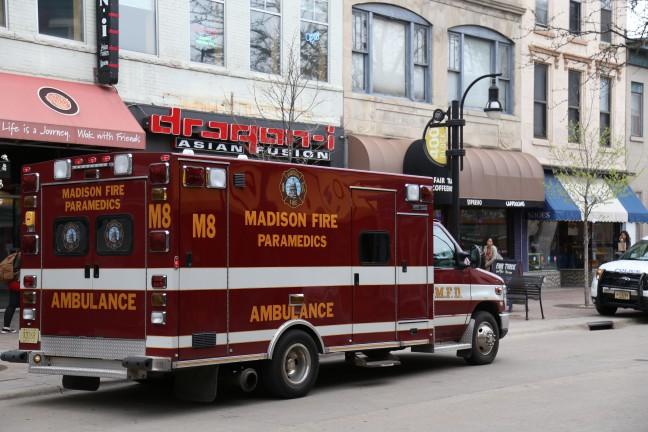The Dane County Board of Supervisors approved the Harm Reduction and Prevention Act, a $750,000 emergency initiative to address opiate and fentanyl-related emergencies in the community.
The initiative will increase awareness in the community and educate about the dangers of opiates and fentanyl, according to the Dane County Executive’s Office.
Safe Communities of Madison will partner with local schools to develop and present a prevention and harm reduction curriculum focused on building resiliency and identifying risks.
In Dane County, opiate-related deaths have increased more than 30% in the last five years. Overdose deaths involving fentanyl are up 70%, according to the Dane County Executive’s Office.
Fentanyl is a synthetic opioid that is 50 to 100 times more potent than morphine, according to the National Institute on Drug Abuse.
“Fentanyl is very prominent in our local drug market here in Dane County,” University of Wisconsin Associate Professor of family medicine and community health Elizabeth Salisbury-Afshar said.
Drug dealers are mixing fentanyl with other drugs like heroin, cocaine and MDMA because it takes a very small amount of fentanyl to produce a high, according to the National Institute on Drug Abuse. This can be particularly risky for people who don’t realize they are taking fentanyl and may be taking stronger opioids than they are used to.
Like many other parts of the country, Dane County has seen that it is not so much pain pills increasing the rates of death but illicitly manufactured fentanyl, Salisbury-Afshar said.
According to Salisbury-Afshar, there are two ways to look at the rate of addiction. One is to do broad surveys of the whole population and ask questions about substance use. The other is to look at how many people are going to treatment.
“We’ve seen a rise in both of those numbers, so I feel confident that there is an increase,” Salisbury-Afshar said.
Many groups in the community are receiving funding to provide Narcan, medication lock boxes and fentanyl test strips through this initiative, according to the Dane County Executive’s Office. These groups include the African American Opioid Coalition ($100,000), the Recovery Coalition of Dane County ($10,000), Dane County Senior Focal Points ($15,000) and Pride in Prevention Coalition ($50,000). Also, $120,000 will be allocated to the school curriculum.
The initiative is creating a prevention specialist position within the Dane County Department of Emergency Management to oversee the Narcan “leave behind” program.
“That is where EMS will leave behind a kit with the family or friends that have Narcan, fentanyl test strips and a pocket mask to help with rescue breathing and to put them in a better position to be prepared if an overdose would occur in the future,” Dane County Emergency Management Assistant Director Carrie Meier said.
In October 2019, there were 804 EMS responses for suspected opiate overdoses. And so far this year, the number sits at 1136, Meier said.
One challenge leaders in the community face is getting people the assistance they need when they are ready, Meier said. Oftentimes, there are delays in getting people to help when they request it, according to Meier.
“We want to make sure that people have the tools that they need, and there’s a lot of really great programs here in the county,” Meier said.
One of those programs is the Recovery Coaching program through Safe Communities. These coaches will go to the emergency room upon request when a patient comes in and has had an overdose, Meier said. The recovery coach will walk hand-in-hand with that patient to get them the care they need and help them along the way, according to Meier.
Coaches are individuals or affected family members in recovery from substance misuse who want to share their strengths with others who are struggling.
The program’s goal is to reduce the time from when an overdose first occurs to when the person makes contact with a professional who can help begin the path to recovery.
“I think we’re working really hard at changing the stigma and getting people the help they need,” Meier said.


